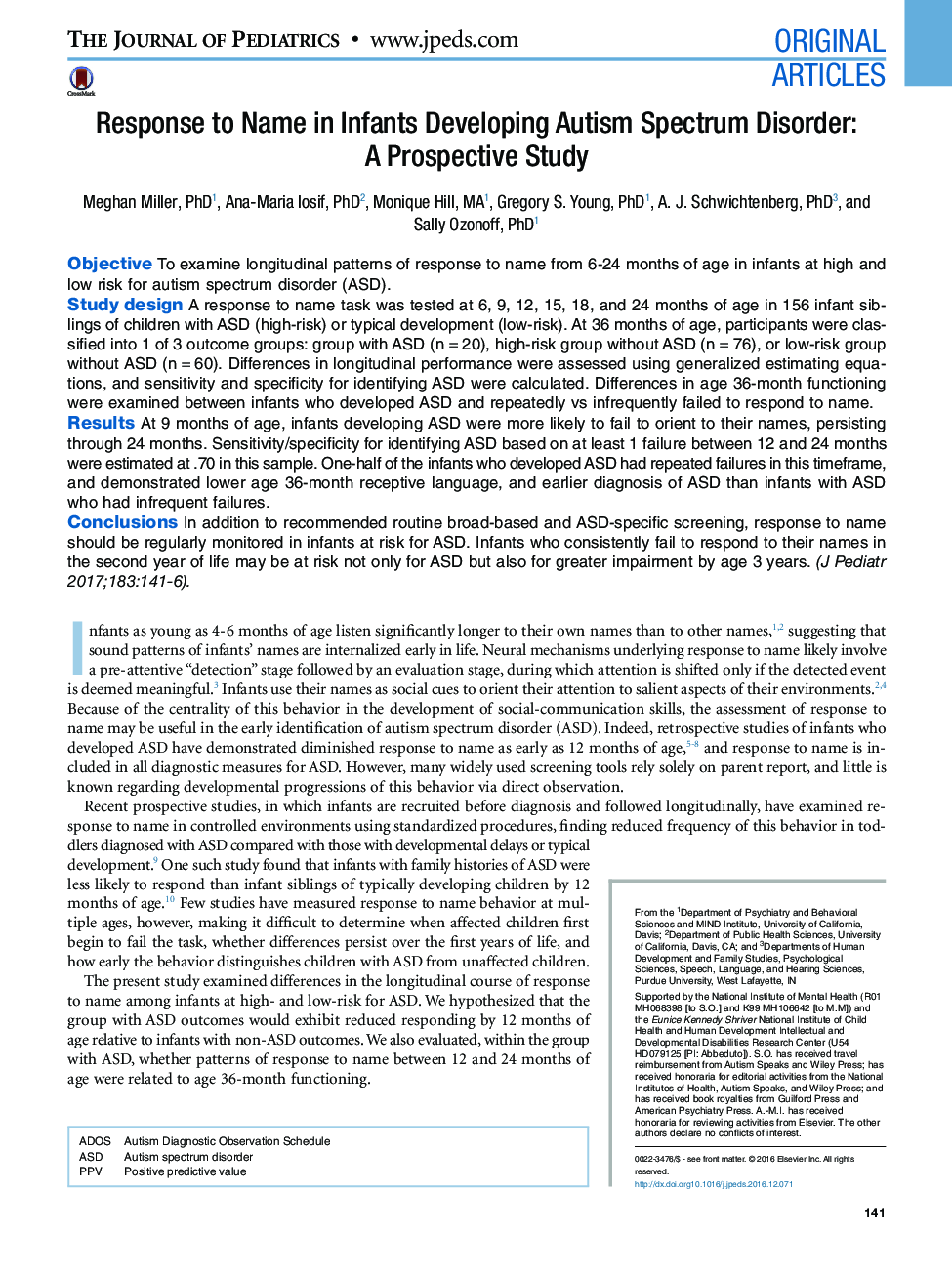| Article ID | Journal | Published Year | Pages | File Type |
|---|---|---|---|---|
| 5719395 | The Journal of Pediatrics | 2017 | 7 Pages |
ObjectiveTo examine longitudinal patterns of response to name from 6-24 months of age in infants at high and low risk for autism spectrum disorder (ASD).Study designA response to name task was tested at 6, 9, 12, 15, 18, and 24 months of age in 156 infant siblings of children with ASD (high-risk) or typical development (low-risk). At 36 months of age, participants were classified into 1 of 3 outcome groups: group with ASD (nâ=â20), high-risk group without ASD (nâ=â76), or low-risk group without ASD (nâ=â60). Differences in longitudinal performance were assessed using generalized estimating equations, and sensitivity and specificity for identifying ASD were calculated. Differences in age 36-month functioning were examined between infants who developed ASD and repeatedly vs infrequently failed to respond to name.ResultsAt 9 months of age, infants developing ASD were more likely to fail to orient to their names, persisting through 24 months. Sensitivity/specificity for identifying ASD based on at least 1 failure between 12 and 24 months were estimated at .70 in this sample. One-half of the infants who developed ASD had repeated failures in this timeframe, and demonstrated lower age 36-month receptive language, and earlier diagnosis of ASD than infants with ASD who had infrequent failures.ConclusionsIn addition to recommended routine broad-based and ASD-specific screening, response to name should be regularly monitored in infants at risk for ASD. Infants who consistently fail to respond to their names in the second year of life may be at risk not only for ASD but also for greater impairment by age 3 years.
